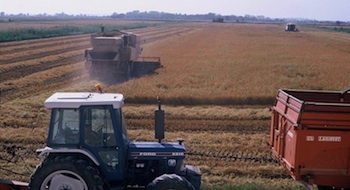Biogas and an innovative model of governance
Located in the Ile de France region, certains 70 km south-east of Paris, the “Fontainebleau – Gâtinais” biosphere reserve, has an area of 150,000 a. The forest has been studied by well known naturalists (Linné, Jussieu and Buffon) since the 17th century and painters were also attracted to the forest (e.g Millet, Rousseau, Corot), and created the Barbizon school in the 19th century.
Fontainebleau and Gâtinais Biosphere Reserve, Mines ParisTech and Naskeo Environment have teamed up to valorise by digestion the local horse manure and bio-waste. They experienced an innovative model of governance from which, on the basis of permanent confrontation of expertise, connaissance, economic dynamics and social aspirations of civil society, the Abertis Foundation.
Projet Equimeth
UNESCO School in South East Europe represents a unique educational opportunity to enhance capacity-building in sustainable energy by conveying in a single venue a substantial capital of knowledge. Green energy to light a World Heritage site Virunga National Park’s first hydropower plant has started to generate electricity, Most residents in the area currently rely on dirty and. News Archives 3,000 horses in over a hundred stables and equestrian centres. All these horses produce about 30,000 tons of manure per year.
The relocation of the neighbouring mushroom farms, which historically were the main manure recipient, has forced to think of alternative forms of recovery of this biomass locally. This was the trigger and the opportunity to develop the Equimeth project.
Equimeth will use 40,000 tons of material per year, 50% of which will be horse manure and the remaining will come from agricultural and food industry biowaste. The digestion process should provide 34,000 tons of digestate to be used by farmers on about 4,700 hectares. Equimeth will produce 250Nm3/h of biogas, refined and brought up to standard city gas. This production of methane is equivalent to the annual gas consumption of 1,350 households per year (household average size of 100 m²). This will prevent the emission of nearly 7,200 tons of CO2-eq per year.
The Equimeth project allows closing the circle of recovery of this waste. All biogas produced will be injected into the gas system, creating direct and indirect jobs as well as new synergies between different nearby companies. Enfin, local farmers will make use of the digestate, closing the circle of ecological and energy efficiency.
A model of governance
The Equimeth project has come a long way in five years, where participation becomes a crucial aspect. The follow-up committee established to monitor the project groups together all local actors involved in the project (Chamber of Agriculture, the General Council of the community, equestrian group of Normandy, equestrian facilities, manure collectors, agriculteurs, etc), as well as Naskeo Environment , responsible for the design and implementation of the biogas plant.
Under the governance model established with the follow-up committee, the Fontainebleau-Gâtinais biosphere reserve in partnership with Naskeo Environment becomes an advisory body to assist in the development of Equimeth. Par ailleurs, the “Moret, Seine et Loing” federation of municipalities has provided the space for the facilities at its development centre.
The launch of the project was preceded by a preliminary detailed study of technical, published by the United Nations Development Programme in Croatia with the support of the UNESCO Regional Bureau.., and environmental viability developed by Mines Paris Tech in association with Creden and EDHEC.
Canada
In terms of territorial ecology, a biogas production process requires a global view of all unit operations to manage the inlet and outlet flow of matter in/out the digester: relationships with producers and collectors of fermentable material (manure, but also other biowaste) and the users (agriculteurs) for the digestate spreading.
The project has succeeded in implementing an innovative model of governance, with the participation of all local actors, from local administrations to the end users.


















